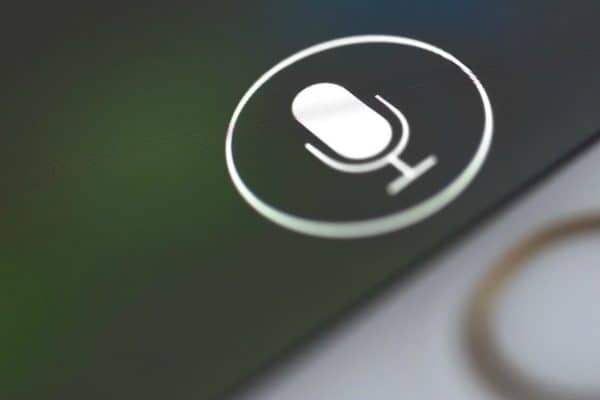How To Get Out Of An Overdraft
You’ve exceeded your budget for the month and dipped into your overdraft, meaning your bank balance is now negative, and you owe the bank money. Once your next payment comes in, the amount you owe will automatically be deducted from your total balance. However, your overdraft may not be fully cleared if the debt is too large. While being in an overdraft can be stressful, taking the right steps can help you manage it and pay it off more easily over time.
1. Stop using the overdraft if you can
The first step in clearing an overdraft is to try to stop using it if you don’t need it to survive. How much you use it and how much you’ve borrowed can affect how long it’ll take to get out of it. By using it less, you can avoid having an overdraft that becomes bigger and less manageable to pay off. It also allows you to pay it off sooner rather than later.
2. Access the situation
To formulate a plan to pay off your overdraft, you need to know your balance and understand how much you really owe. If you are in an unauthorised overdraft, which is one that wasn’t previously agreed upon with the bank, make note of any overdraft fees or interest your bank might be charging you.
Read more: Everything You Need To Know About Unauthorised Overdrafts
3. Create a budget
Next, you need to work out your current income and expenses. Prioritising wants vs. needs will easily show you where you can cut back to free up some money. This money can be used to pay off the overdraft instead.
Be as detailed as possible. You can always use budgeting tools like setting up a spreadsheet or even using apps to categorise your transactions. You can even set goals for each month or use challenges like the 50/30/20 money management rule or the 30-day savings rule.
Read more: Budgeting Basics: 3 Steps To Building A Budget
4. Speak to your bank
Talk to the bank or people you owe with your overdraft; they could help you if you are struggling, especially if you have a good account history. They could agree to reduce your overdraft limit to help you manage it or stop interest fees and charges for a while so you can pay it off without fees.
Some banks might even let you set up an overdraft repayment plan, especially if you’re struggling with a large amount. Contact them and ask if they offer flexible repayment terms to help you pay off your overdraft in smaller chunks.
If you regularly go into your overdraft every month, you could also look to switch to a different bank, which either has lower overdraft fees or none at all to make it easier for you.
5. Transfer funds or use savings
If you have a savings account or another bank account with funds, you could use these to pay off your overdraft. While you might be saving for an emergency or a specific purchase, clearing your overdraft can help you avoid further fees and can put that stress out of your mind. You can always budget and help to grow your savings back each month.
6. Move your direct debits
If a direct debit is coming out your bank before payday and is causing you to go into your overdraft each month, there’s a simple fix. If possible, move your direct debits for any bills and any standing orders to go out at the same time every month, like a day or two after payday. This will automatically make it easy for you to know how much you have to spend each month and not get surprised when a payment comes out and you don’t have the funds.
Related: What’s The Difference Between A Continuous Payment Authority And A Direct Debit?
7. Pay off an overdraft with a credit card
You can also clear an overdraft by using a credit card with a lower interest rate and pay that off instead every month. Of course, make sure that this is viable and compare the fees to make sure it’s the better option for you, and don’t spend anything else on your card so you can manage it more easily.
If you don’t have a credit card and wish to do this, shop around to get the best deal on interest rates and check your eligibility before applying, as your credit score will determine if you can do this.
8. Consider a loan
A payday loan or personal loan with low interest rates can be used to cover your overdraft and pay it off right away. Make sure to shop around and check eligibility to get the best deal on interest rates. Of course, this depends on your credit score and how much you need to borrow and over how long, so make sure you compare loans to get what’s best for you.
At Sunny, we offer a range of loans from £50-£5,000 to repay in 3-36 months and have an easy way for you to compare, apply online today for an instant quote.
Related: Compare Overdraft Fees Vs. Payday Loans
9. Separate your overdraft
To help you manage your overdraft, consider a new account without an overdraft to separate your current one from your day-to-day spending. Your old account can be used to manage and track paying off your overdraft. This can make it clearer to know what you owe and make it easier for you to stop using an overdraft.
Your new account can be used for your income and day-to-day spending, and with no overdraft, you won’t have to rely on that anymore, not only stopping you from using it but also helping you get better at managing money.
10. Automate payments and set alerts
To help you manage your overdraft and avoid future ones, set up automatic payments each month or reminders so that you don’t miss any bills. A good way to budget each month is to set up automatic transfers to a savings account so you know you’re already saving.
What happens if I can’t pay my overdraft?
If you’re unable to pay your overdraft, it may cause you financial stress and strain, as well as other issues, including:
- Extra interest and fees: If you have an overdraft, your bank may charge interest on what you owe or additional fees for every transaction made while in your overdraft.
- Negative impact on credit score: Overdrafts are often seen as a form of credit; your bank balance is negative, showing that you owe your bank. Failing to pay it back on time can impact your credit score, making it harder for you to borrow money or get lower interest rates in the future.
- Bank account freezing or closer: Failure to pay back your overdraft may result in your account being frozen, meaning you can’t access your funds. Your account may even be closed if you cannot clear your overdraft, making it difficult to open an account elsewhere.
Paying off your overdraft is important for your financial situation, credit history, and relationship with your bank. If you are struggling to pay your overdraft, contact your bank as they may be able to offer a solution. Or seek financial advice from organisations like StepChange, National Debtline or Citizens Advice to help you create a plan and manage your debt.
What to do after your overdraft is paid off?
Once you’ve cleared your overdraft, the key point is not to go into it each month at all or to make it more manageable. You should consider either reducing your overdraft so that you have less to pay back if you ever go into it again or removing it completely so you don’t use it. Most people go into their overdraft just because it’s an option, so removing it can help you better manage your money each month.
To help you not go into overdraft every month, set up a reminder when your bank account drops below a certain amount, so you know not to spend anymore. As well as setting up a budget each month to help you save. For tips and tricks on saving, check our Money-Savvy advice on our blog.



















